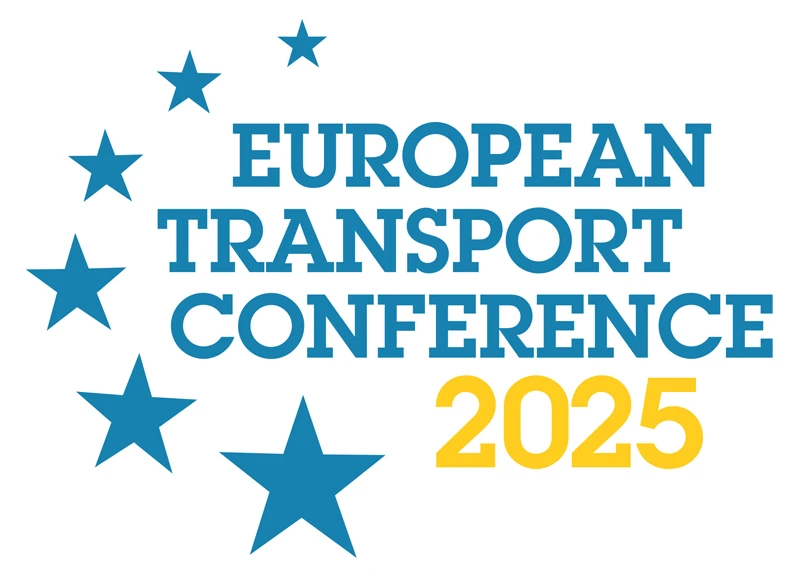-
Past ETC Papers

Browse, search and view papers from the past AET Conferences.
-
Members' Area

AET promotes networking and exchange of ideas, information and opportunities amongst members.
Conference Papers 2023
Milan, Italy
ETC Conference Papers 2023
Impacts of road transport automation in rural areas – a case study for a reference region using the German national transport model DEMO
Seminar
Day 2 (7 Sep 2023), Session 4, Modelling Vehicle Transition, 10:00 - 11:30
Status
Accepted, documents submitted
Submitted by / Abstract owner
Nina Thomsen
Authors
Nina Thomsen
Short abstract
This study presents the modelled impact of road transport automation on passenger travel demand in a German rural region. Different scenarios with shared autonomous vehicles and private car automation are compared to a baseline without automation.
Abstract
Autonomous vehicles (AV) come with hopes of improving mobility, accessibility and efficiency of the transport system. Furthermore, shared autonomous vehicles (SAV) can be used to offer on-demand transport services like autonomous car- and ride-sharing. The benefits of AV and SAV might however differ depending on regional types. The population in rural areas with less dense public transport services and longer commutes might especially profit from autonomous driving. However, current research often focuses on urban regions. To narrow this research gap, the study at hand assesses the potential impact of road transport automation on the transport system in the rural Main-Rhön region in Bavaria (approx. 4,000 km² and 425,000 inhabitants) using the national travel demand model of Germany (DEutschland MOdell – DEMO).
DEMO is a macroscopic travel demand model in which passenger transport is modelled with a classic four-step-approach (Winkler & Mocanu, 2017). Additional modelling steps enable DEMO to simulate the impact of various facets of road transport automation. First, regional availability rates of privately-owned conventional cars and AV are adjusted according to the results from an upstream car stock model. The mode choice model then includes both private AV and SAV as new available options. Level of service indicators of SAV services like occupancy rates, detours and costs as well as fleet sizes are determined by applying a ride-sharing and vehicle scheduling algorithm for macroscopic models based on Friedrich et al. (2018).
The impact of automation on the transport system in the rural region was measured by comparing indicators like modal shares and mileages with a baseline scenario without automation for the year 2050. Two automation scenarios were calculated with the following assumptions regarding the availability of automation:
• Private AV: In this scenario, private AV are available in the mass market. There are no other AV-related services.
• Full potential: Besides the private AV, SAV services in the form of on-demand car- and ride-sharing and as feeder to railway stations are available for the whole region. It is assumed that all demand for SAV can be satisfied with waiting times of under 10 minutes for shared trips. While feeder trips are included in public transport ticket prices, door-to-door trips are priced with a fee per km depending on fleet size, mileage and occupancy rate.
The model results indicate that there is a slight increase in car usage with the introduction of private AV, with car mileage higher by 2 %. Changes in modal shares are however barely noticeable, as cars are already the dominant mode with a modal share of 60 % in the baseline scenario. In general, trips conducted with AV are longer than those with conventional vehicles, which is in line with the assumptions made on perceived travel times. Significant changes in travel behaviour can be observed in the second scenario, with the introduction of SAV reducing private car mileage by almost 30 % and taking up a high modal share of 30 %. In order to satisfy this demand, a fleet of 7,100 SAV is needed, with a mean occupancy rate of 1.2. This equates to 1.8 vehicles per km² or 16.7 vehicles per 1,000 inhabitants. The introduction of SAV services leads to an increase in total road mileage by cars and SAV of 17 % compared to the baseline scenario.
In general, it appears that the introduction of AV in the private vehicle market only has a limited impact on travel behaviour in the reference region. The model however predicts a high demand for SAV services, which leads to strong modal shifts. Comparing this to the same scenario applied for German cities with more than 100,000 inhabitants, the modal share of the SAV services is 25 % higher in the rural region. This result sparks the motivation for further research on user preferences for these new mobility services and on acceptance. The results also indicate that there is a potential to improve public transport usage in rural areas with demand-responsive transport services.
Literature:
Friedrich, M.; Hartl, M.; Magg, C. (2018): A Modeling Approach for matching Ride-sharing Trips within Macroscopic Travel Demand Models, Transportation, 45, 1639-1653.
Winkler, C.; Mocanu, T. (2017): Methodology and Application of a German National Passenger Transport Model for Future Transport Scenarios. In: Proceedings of the 45th European Transport Conference. European Transport Conference, 4.-6. Oct 2017, Barcelona, Spain.
Programme committee
Transport Models
Documents:

Association For
European Transport
Forester House
Doctors Lane
Henley-in-Arden
Warwickshire, UK
B95 5AW
+44 (0) 15 64 793552
VAT number: 710 1866 64
Conference Supporters & Endorsers




Legal Entity
The Association for European Transport is registered as an Association ('vereniging') with the Chamber of Commerce for Haaglanden in The Netherlands under company number 27170096.
Built on Zenario




